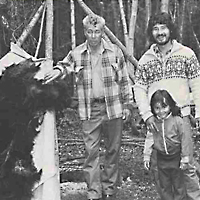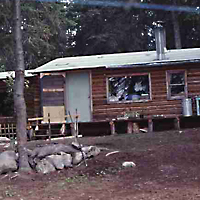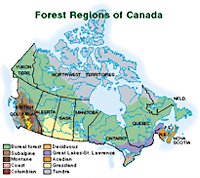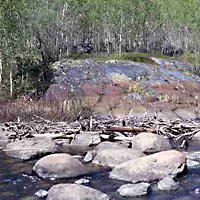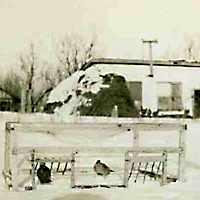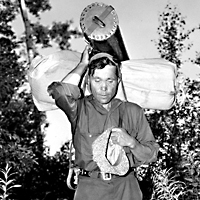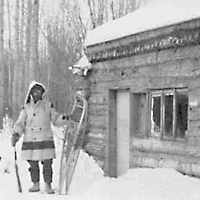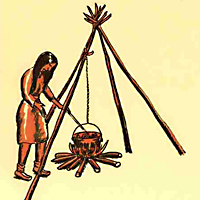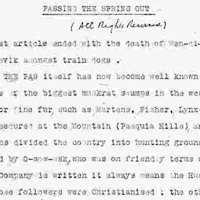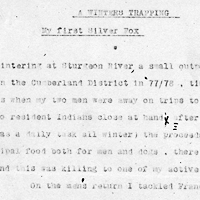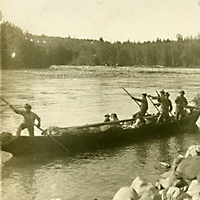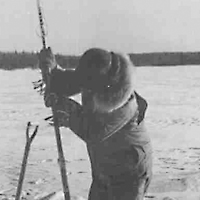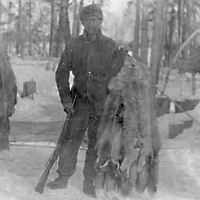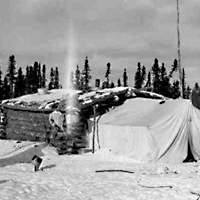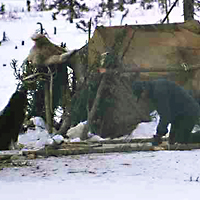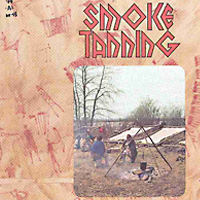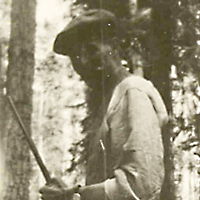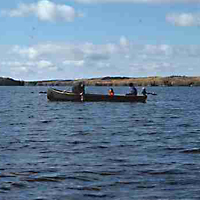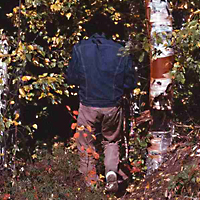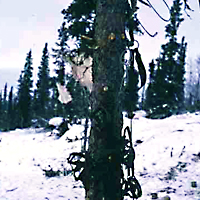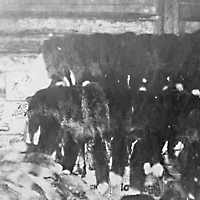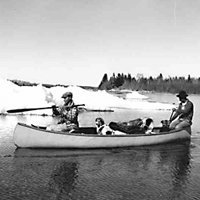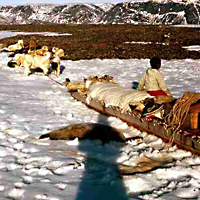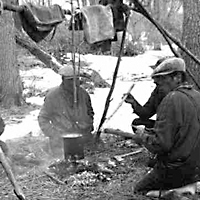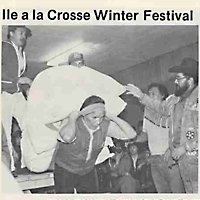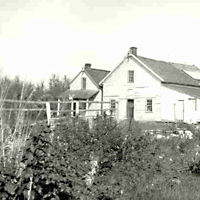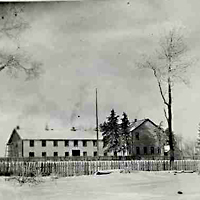Trapping and Trapline Life
Author: Merle Massie
"Lots of changes in fifty years of trapping," declared James Ratt in 1983. In fact, he added, it was "a way of life now almost gone." James Ratt’s story of life on the trapline is a simple but profound documentation of the changing nature of northern life, seen from the eyes of the late twentieth century. His account of traditional trapline life, from the lengthy canoe journey to and from his family’s trapline, to the use of dogteams and bush routes that were ‘like a highway’ from so much traffic, and a memory of settlements and gardens long lost to time and the growing urbanization of Saskatchewan’s north strike a chord not often heard by those who study the fur trade.
Fur trade history is dominated by the economic and social history of the major industrial players – the Hudson’s Bay Company, the smaller Montreal trading firms, and others – but rarely do we hear about the life of the ‘suppliers’ on the trapline. It is an interesting story, the invisible backbone of the mighty fur trade empire that drove much of Canada’s development well into the 19th century, and in the northern boreal forest, well into the 20th. The seasonal nature of trapping, the kind of furs taken, the mechanics of setting up and running a trapline, and the connection between trapping, hunting, and other resource extraction activities will form the skeleton of this essay. Mechanization and transportation, the industrialization of the fur trade, changes in staple economics and Aboriginal society are key parts of this story. Trapping is not an isolated activity. It lies within a network of environmental, physical, social, political and economic pressures that constantly hover over the question: is trapping merely an economic activity, or is trapping a particular way of life?
Fur Trade Overview
Aboriginal groups relied on the annual fur harvest to provide clothing, shelter, bedding, food, and utensils. Before European explorers and traders arrived, there was a vast network of inter-tribal trade of surplus goods – those over and above what was needed for individual, family, or band sustenance.1 Fur pelts were traded for buffalo hides from the prairies, corn from further south, flint and basalt from over the mountains, or Inuit goods such as soapstone, whale, or seal products from the far north. This trade was steeped in the creation of alliances, marriages, trading partners, treaties of peace (and sometimes, declarations of war), and extensive rituals.2
The advent of the Hudson’s Bay Company (HBC) introduced a new dimension to this trade. It wasn’t only that new goods were introduced – such metal pots, knives, blankets and beads – but the way in which trade was conducted began to change. In the earliest years, canoe brigades from each band carried their pelts to the major forts on the Bay. Some of these brigades took many weeks to complete. Certain groups, such as the Cree, were advantageously situated to become ‘middlemen’ in a vast network of commercial trading, leveraging their proximity to the European fur trade posts into a sort of cultural brokerage, monitoring the amount of goods that moved into the interior of North America.3 In the late 1700s the Montreal fur traders moved into the vast western interior, building posts and taking goods directly to the First Nations customers. The HBC was forced to move inland to compete. This again changed fur trade needs, and set off an unprecedented period of growth. The fur trade developed into a complex business that required not only trappers, but a vast transportation and inland trading post network requiring boats, canoes, paddlers and voyageurs, food, builders, carpenters, labourers, women, children and animals, not to mention goods, in ever-growing numbers.4
Gradually, the alliances, rituals, and ‘treaty trade’ between First Nations groups gave way to a more simplistic but pervasive economic exchange, a bartering for goods according to the European model. This exchange grew to include items that initiated great cultural change, such as the gun which revolutionized warfare and hunting5, and the introduction of food staples such as flour, from which the First Nations made bannock.
As the European trade grew, it forced a re-examination of the land and its resources, which came to be seen as something to be owned, exploited, used, and cultivated for human benefit and profit, on the European model. Thus, the culture of trapping and trapline life drew from both models: the need to provide food and pelts for daily life; and the need to provide surplus furs to be sold or traded on a large scale.6 Life on the trapline was tied to this vast network of the fur trade; but its operation on a day-to-day and seasonal basis remained closely linked with the land and its resources.
The Land and Resources
Most trapping takes place in the northern boreal forest, which stretches from the northern edge of the prairie/parkland to the tundra. The Atlas of Canada describes it as "draped like a green scarf across the shoulders of North America."7
The boreal forest ecosystem changes from south to north and from east to west, but overall it is dominated by needle-leafed coniferous trees such as spruce, fir, tamarack, and jackpine interspersed with broadleaved trees such as birch, poplar and willow. Various mosses, lichen, and fungi are also found. Low marshy areas, known as muskegs, are filled with water, peat, mosquitoes, blackflies, and a variety of rare plant species.8
A vast array of animals live in this ecosystem, from beaver, otter, fisher, and muskrat in the ponds and streams to lynx, fox, coyotes, weasels, rabbits, bear, skunks, squirrels, mink, wolverines, wolves and larger fur-bearing animals such as moose, elk, and woodland caribou in the forest. All of these animals have been trapped or hunted and their pelts traded for profit or other uses, but their importance varied depending on fashion, market trends, and rarity.
Historically, a few prairie denizens have also been trapped for profit. Beaver and muskrat range into the prairie, as do gophers, groundhogs, skunks, rabbits, coyotes and foxes. Birds have also been successfully trapped, and offer both a welcome change in diet and feathers for ornamental and practical uses. Fewer traplines operate on the prairies, although the gopher population might start a new trend.
Each animal’s pelt is used for a different purpose. For example, rabbit skins are soft and particularly warm, excellent for lining bedding or babies’ winter clothing. Wolverine is particularly useful for lining parka hoods, as it resists the buildup of ice crystals. Luxury furs such as mink are used in fur coats. Tanned moose hide is used for all kinds of clothing, from mittens to moccasins.9
The beaver is perhaps the best-known fur-bearer in Canadian history. Beaver fur has ‘barbs’ which, when the fur was stripped from the hide and processed in factories, made a particularly strong felt for making hats. These felt hats were wildly popular in England and elsewhere throughout the 17th and 18th centuries – much of the fur trade was based on a long-standing fashion trend! In fact, beaver hides were so important they became the ‘currency’ of the fur trade, known as the ‘Made Beaver.’ This standardized trade so that each HBC post would offer the same rate of exchange. One Made Beaver could buy (at Albany Fort in 1733) two pounds of Brazil Tobacco, or five pounds of shot, or twelve needles. Ten Made Beaver would buy a gun. The company also standardized rates across furs, as, for example, two otter pelts might equal one Made Beaver.10 James Clinkskill set up a store in the Saskatchewan region in the 1880s; his memoirs discuss trading and trade goods.
Natural furs and hides were among the most sought-after goods from the boreal forest. A renewable resource, fur and leather products generally go into the fashion industry. Protests by various high-profile animal welfare advocates since the 1980s have driven down both the price and demand for furs. Animal rights groups target leg-hold traps in particular, and there are many lurid websites calling for an outright ban on trapping. Some groups are famous for spray-painting expensive fur coats. However, trapping remains a traditional way of life for many First Nations, Métis and a few white trappers, commanding respect and esteem for their stewardship and knowledge of the land and its resources.
Choosing a Trapline
Choosing a trapline is a complex process, and binds two key factors: local resources and regulations. A trapline is established in a remote region of the forest, near good fur regions and game trails. Trappers spend time walking, snowshoeing, snowmobiling and canoeing their proposed trapline to find game trails, dens, and habits of their target animals. Natural environmental constraints, particularly local animal populations, are important but an imbalance in the local animal ecosystem can be carefully targeted and manipulated over time. For example, if the beaver population is low, a trapper can focus on another, more abundant local pelt until the beaver population recovers. Targeting fox and coyotes may allow rabbits to flourish.
Historically, some traplines were developed by family units and passed down through the generations, but these are rare. More often, individuals and family units trap in different regions of the forest each year, in response to external factors such as major forest fires, over-trapping, natural reduction or abundance in local furs, disease, proximity to a trading post or itinerant traders, or proximity to family, friends, or fur partners. Trapper James Ratt, for instance, moved with his family "from year to year around the vast region between the Foster Lakes, Wollaston Lake and Reindeer Lake."11 Aboriginal ‘fish camps’ of the Stō:lo nation of British Columbia have been in the same place for centuries; in contrast, the northern boreal forest Cree, Chipeweyan, Métis and white trappers developed a more fluid industry that responded to local needs and pressures.
Although the trapping industry was traditionally self-regulated by local families and bands according to needs, local pressures, and individual abilities, trapping is now an industry highly regulated by the government.12 Trappers require licenses issued by each province or territory. In Saskatchewan, those wishing to trap in the Northern Fur Conservation Area must first be a member of the regional trapping block. These trapping blocks are defined regions with specific borders and a regulated membership, usually centered near a village. However, membership in a northern fur block is restricted, and it can be difficult for young adults to become a member and take up trapping. Such restrictive measures, although good for local fur conservation, can cause friction and unrest in small communities with limited local economic resources.13
Seasons
The natural cycle of yearly seasons shape and define trapping. The main trapping season runs from about late October to May. In the late fall and early winter season, trapping is at its best: the furs are prime, which means that animals have developed the full-furred and luscious winter coat sought after by fur traders and fur buyers. Beaver and muskrat are taken first, generally in October, but after freeze-up in November, the overland animals are targeted. Conditions are excellent, as the snow is generally not too deep, and the animals are out and about, endlessly curious about their new, frozen world. Game trails are easy to find, and trappers can set up their traps and snares.14 The majority of a good fur catch comes in before Christmas, and most trappers take a Christmas break.
From January to March, furs are still taken and trappers like to be ready for the spring beaver and muskrat run before summer forces an end to the season. As the winter progresses, furs can become ‘rubbed,’ or start to lose patches of fur (general wear and tear from life in the forest) and begin to lose value. As spring approaches, fur-bearing animals shed their winter coats and grow a thinner, summer coat, again losing value. As spring arrives, muskrat and beaver are once again taken.
Most trappers move their furs to market in the spring, then take some time to rest. Summer is the off-season for furs. Few animals are trapped or snared in the summer season, unless for food. Fish and berries historically made up the summer diet of trappers. For many years, sturgeon fishing in the rivers supplemented a trapping income, as sturgeon bladders – known as isinglass – were marketed as a natural gelatin. Stripping the isinglass for market was a woman-dominated activity.15
It’s important to remember that trapping was only one part of a typical trapper’s yearly lifecycle. Few trappers – now or historically – derived their entire yearly income from the trapping season. Trapping was combined economically with other labour sources: manning voyageur canoe brigades, freighting, commercial fishing, lumbering, mining, and road or town building, all generally as wage (or, if for a trading post, trade) labour. Modern income industries have had a direct impact on local trapping. A trapline owner may choose to rent his trapline to another while pursuing more lucrative opportunities, or will only trap before Christmas and reserve the time from January to March for commercial fishing operations.16 This ‘proletarianization’ of trapping into a rental situation underscores an ongoing question about trapping: is trapping an economic activity, or is it a way of life?
Shelter on the Trapline
Trapping took place in the depths of a northern winter, and a trapper needed a warm place to live. Most trappers developed a permanent cabin at their ‘base’ camp, with two or three smaller satellite camps (sometimes called ‘line’ camps or ‘out’ camps) at various points along their trapline. A base camp was strategically placed near a good water source for transportation, water, and fish. Ideally, there was a stand of trees nearby to provide logs for cabin construction and firewood. Once the main cabin was built, a number of outbuildings might be erected for: storing food, pelts, and equipment; food preparation (such as smokehouses); dog shelter and usually, a toilet placed a strategic distance away. Although many of these base camps were constructed using only local resources -- log walls chinked with moss and mud and roofs made with sod were common construction techniques -- modern trappers might bring in processed lumber for doors or floors, glass windows, stoves, and other conveniences. Propane stoves, fridges and heaters, battery-powered equipment enhanced camp life as those technologies became available in the early 20th century. More recently, a few cabins are close enough to power lines to draw electricity, meaning luxuries like electric lights, stoves and refrigerators can be used – if they can be hauled in – and the growing use of solar panels as a source of energy are transforming base camps.
Outcamps provided storage and a place to sleep and eat when out checking and setting traps on the trail. Outcabins were either cruder versions of main cabins, or more portable tents. These line cabins were more important when the main mode of transportation on the trapline was by sled dog, walking, or snowshoeing. The advent of snowmobiles in the mid- to late-twentieth century with their speed and strength, have limited the need for outlying camps.
Aspects of Daily Life
Until about the mid-twentieth century, Aboriginal traplines were often run by a family group, with specific gender and age roles incorporated into the daily routine. Men followed the trapline, setting bait and traps or snares, and returning with the catch. Women were in charge of processing the pelts, along with child care, camp cooking, sewing, and crafts. Other important chores included making dogsleds, snowshoes and fishnets, pelt stretchers, dog harness, moccasins and other clothing. Children and older family members looked after dogs, fished, carried wood, and picked berries along with learning how to skin and stretch a pelt. Family-oriented trapline life meant that children learned bushcraft from an early age, and were raised both to know the products of the forest, and how to prepare them for use or sale.
This kind of family-oriented trapline life was culturally-specific to Aboriginals – both First Nations and Métis. Although some Aboriginal men ran traplines alone or with one or two other men, family life was the norm. However, white trappers began to enter the north country around the turn of the twentieth century. During the Great Depression, many hundreds took up northern trapping and trapline life, in an attempt to eke out a living. Few of these men brought families. Their entrance into the northern trapping life put added pressure onto the limited local resources, and life became even more difficult. Once the Depression eased, many of these trappers left for better economic prospects in the south, although there remains a strong contingent of white trappers in the north.17
Trapping and trapline life cannot be discussed in isolation. Unlike other economic activities (like wage labour), trapping is part of a seasonal economic system and lifestyle that includes hunting, fishing, bushcraft, and gathering berries and medicinal plants. Forest products, particularly firewood, are another important bush commodity. Several studies have proved that, contrary to popular understanding of modern First Nations life, the bush harvest remains an integral part of the northern boreal forest economy.18
While out checking traps, a trapper kept a wary eye out for moose, deer, or other large animals to hunt for food. Indeed, if game or other food sources were scarce, a trapper would have to devote more time to finding food and less to trapping, which had an impact on both the trapper’s economic stability and those of the larger fur trade.19 Time spent hunting and gathering meant less time trapping, and throughout the nineteenth century the HBC developed extensive food import strategies and generous subsidies to trappers to compensate for this gap. Some First Nations groups and medical historians now point to the introduction of flour, pork, and other European commodities as fundamentally changing Aboriginal diet, with disastrous consequences such as diabetes and a reduced ability to use bush resources.20
A large moose, shot in winter, could keep a family in frozen fresh meat for a long time. Game shot in the summer had to be cut in thin strips and dried for long-term storage, or smoked. Jerky and pemmican (dried pounded meat mixed with fat and dried berries) were traditional First Nations food and powered the voyageur canoe brigades of the past, while native hunters kept local trading posts in fresh meat.
Establishing a trapline near a lake or stream full of fish provided another source of food, both for the family and the dogs. Fish could be caught in nets, split open and dried on racks in the sun or over a green log fire, which generates lots of smoke. Different types of wood create different smoked flavours, and families experimented with different recipes. Fish for dog food could be caught and fed whole and frozen for maximum food value. In summer, after traveling to the post to exchange fur pelts for good and supplies, many families would camp by a river or lake for the summer months, fishing and preserving a supply of meat to tide them through the fall freeze-up.21
Fresh garden supplies were always a treat, and some trapping families developed extensive gardens at their base cabins, particularly through the 19th and 20th century, as agriculture became more established at the fur trade posts and southern farms. Potatoes often grew well, even in the shorter growing season, and records from missionary and trading posts indicate extensive garden plots, many of which included fresh greens, turnips, onions, and even grains in addition to roots crops such as potatoes and carrots.22
The Fur Catch
The main purpose of a trapline was to trap furs and process pelts for trade and profit. Each furred animal was trapped or snared according to its natural inclinations or the trapper’s preferences or legal restrictions.23
While First Nations groups originally took their furs using devices made with local materials (sinew snares, arrows, deadfalls, etc.), the advent of European steel brought manufactured steel traps into use in the 1700s. These steel traps were effective, but increased the cost of trapping. Traps had to be purchased and cached from year to year, maintained and kept in good working order. More than one trap size was needed, depending on the size and type of animal targeted.
Traps were set in strategic places on game trails, near dens or food sources. Bait or scent glands were often used to entice game into the traps, and each trapper tended to develop favourite ‘recipes’ for bait. Once traps were set, a trapper checked the trapline every few days, removing successful catches, resetting traps or snares that had been ‘sprung,’ tripped, or turned over, and taking the carcasses to camp to be turned into pelts for use or sale. As more pelts were processed, they were carefully stored to maintain quality until the trapper was ready to return to the local or regional center to sell the furs.
Fur farms were a twentieth-century innovation to the fur trade. Particularly on the southern edges of the boreal forest and into the parkland, entrepreneurs developed fur farms as an alternative to setting up and running extensive traplines. It is sometimes suggested that the quality of tame fur or pelts do not compare with wild fur. However, the animals can be kept in relative safety and comfort, and their annual harvest does not use leg-hold and other less-acceptable trapping methods.25
Transportation and Communication
Transportation routes in the boreal forest generally used established waterways and portages; overland routes were developed by blazing through the forest, cutting trees and widening trails. Such work was labour-intensive (and on a large scale, such as road-building, expensive) and was generally kept to a minimum, although northern road-building initiatives (such as the Roads to Resources campaign) opened up vast stretches of the boreal forest to vehicle and year-round traffic. The simplest winter travel utilized snowshoes – an essential northern transportation item, suited to short trips. In summer, canoes or small boats were essential, although the 20th century adoption of outboard motors has all but replaced long days of quiet paddling.
A typical dog team consisted of about five to seven dogs, and their toboggan. They could pull roughly their own weight (combined) in the sled, plus that of the trapper, or ‘musher.’ Fresh, deep snow was difficult for dogs to traverse; the musher would have to tramp in front of the team, making a track. Toboggans were made of light but sturdy material, with birch being a favourite.
Line cabins were generally placed roughly fifty kilometers apart – the distance a dogteam could reasonably be expected to travel in one day. A trapper traveling the trapline would carry only essential goods, such as a bedroll, tea pail, grub sack, extra traps and bait, food for the dogs, and a gun with ammunition.
Perhaps the most important change in transportation on the trapline has been the introduction of personal snowmachines, or snowmobiles. From the original homemade contraptions to the coaches built by Bombardier in the 1950s and the luxury machines of today with handwarmers, footwarmers, electric start and reverse options, snowmobiles became the standard workhorses of trapline life. Snowmobiles offered strength and speed, allowing a trapper to develop a more extensive trapline. Steel traps were heavy. Their use required more dogs to pull a larger sled loaded with heavy traps; more dogs and equipment meant more expense for the trapper in food, harness, and a larger dogsled. As snowmobiles replaced dogs as the main transportation engine around a trapline, some older residents decried this change. Mourning the decline in dogsled use, older trappers pointed out that purchase, repair and maintenance of a snowmobile, including gas and oil, merely shifted the cost burden. If money was tight, dogs could be fed on local resources and in adverse conditions, a dog team could generally find its own way home.
Another significant change in transportation was the development of air travel. First used in the north following WWI, bush pilots and planes broke the isolation barrier of the north. Bush pilots have told harrowing tales of crashes and dramatic rescues. Airplanes had to be adapted to northern life: in the summer, planes were equipped with floats; in the winter, skis, to land on the large and small lakes. Planes became an important component of northern life, freighting in supplies, carrying out those who were sick or wounded, carrying messages and in general providing a faster line of communication and transportation to the convenient services found more abundantly south of the boreal zone.26 Individual trappers on isolated lakes could put out messages or distress signals to airplanes flying over, or could order a mid-winter supply drop. However, there were drawbacks. Where once canoe brigades trekked through the waterways and dogsled ‘highways’ connected communities, flying created a separation between the people and the land.27
Communication in the north was also transformed, from the ‘moccasin telegraph’ to radio, two-way radio, cellular and satellite telephones, and even satellite televisions. Northern news moved quickly between isolated communities and from lonely bush cabins to the wider world. For some, improved communication ameliorated the most difficult aspect of northern bush life – extreme isolation. The so-called ‘Mad Trapper of Rat River,’ the Yukon trapper who led RCMP officers on a wild chase through the bush, is the most well-known example of the hazards of isolation. This kind of behavior – known as ‘bushed’ – appeared more commonly among single trappers, and less so for those who trapped as a family.
Market and Economy
Selecting, setting up, and operating a successful trapline was only part of the equation; a trapper must then move the furs to market. As with any staple industry, the fur trade relied on the economics of supply and demand: when demand went up, the price offered for the goods went up and more people become involved in trapping; when demand went down, a glut of furs on the market drove down prices. Knowing the fur price for each kind of animal was part of a trapper’s strategy, targeting certain animals over others. However, this sometimes led to species overtrapping.
Historically, a trapper (or a band, or a group of trappers) would take their season’s catch to the fur forts (such as York, Albany, Fort Prince of Wales, or others) in spring and early summer canoe brigades. As the fur trade forts moved inland and fierce competition between the Bay men and the Montreal traders drove up fur prices, trappers only had to travel to local posts with their seasonal catch. Often this was done in two stages, one near Christmas with the late fall catch, and another in the spring, after the ice broke and canoes could once again be used. Trappers and hunters were considered one and the same thing; those skilled in bushcraft usually had not only furs, but fresh meat, jerky, or pemmican to bring to the market to trade for provisions or supplies. Although most posts operated fairly, trappers could take their furs to more than one post in the vicinity, shopping for the best price. Fur pelts were ‘graded’ according to their size, fur quality, and hide quality, and there was considerable room for negotiation in the final return.28
In the late nineteenth and early twentieth centuries, ‘tripping’ was developed, both by fur companies and private enterprisers. A ‘tripper’ would take a load of goods and provisions inland, seeking out trappers on their traplines, to trade in the comfort of their cabins. Although some trippers operated in early spring, most would go from trapline to trapline in the winter, using dog sleigh or horses over the snow. Many of these ‘trippers’ were Aboriginals who knew their tripping region and its people well. Trippers would trade astutely and usually ended with a profit, with far less effort on the part of either the trapper or the company.29 Tripping developed alongside the more traditional market technique of visiting the fur trade post, but many trappers found such small-scale trading handy in the winter months, if supplies were running low.
The economics of a debt economy drove much of the fur trade for hundreds of years. Aboriginal people trading with the HBC took on ‘debt’. To outfit a season of trapping, or to procure supplies in a lean season, a trapper would take supplies on credit, in exchange for a promise to bring their next season’s fur catch to that post. This early method of credit benefited both sides: the HBC took on a short-term loan to secure a supply of furs, and the trapper could access goods or supplies when necessary, such as in leaner seasons or just before fall trapping. In a barter economy built on the Made Beaver currency, this kind of exchange was clearly important.30 Even later, as the Made Beaver currency gave way to money barter and exchange in the 20th century, many Aboriginal trappers preferred the HBC method of debt over the cash economy.
The direct connection between a trapper and the fur traders/HBC got a severe blow in Saskatchewan in the mid-20th century. The newly-elected Co-operative Commonwealth Federation (CCF) government led by Tommy Douglas in 1944 set out to actively develop the provincial north, from its transportation network to its resources. Determined to "eliminate exploitation of the trapper," it set up a provincial Fur Marketing Service.31 Furs were turned over to the local conservation officer, who paid fifty percent of their estimated value. The furs were shipped to Regina, sorted and graded, and sold at a fur auction. The returns, minus auction house and other fees, were returned to the trapper. It was an attempt to control and channel the fur harvest, but northern trappers vehemently opposed the scheme, which ended in 1955.32 One of the reasons the Saskatchewan Fur Marketing Board was so spectacularly unsuccessful was that it cut off the direct ‘debt’ relationship between the HBC and trappers – the HBC could not extend credit when it knew it would not get the furs.33 Also, the trapper was forced to ‘camp out’ at the post office for months, waiting for the final cheque to arrive.34 However, there has never been a significant return to the ‘debt’ economy.
Social Changes to Trapline Life
Trapping is closely linked to the land and its resources; as such, some aspects of trapline life have changed little in thousands of years. However, researchers have noted some disturbing historical and contemporary insights that changed the social structure of trapline life. Where once traplines were operated by family units who would migrate to the trapline for several months, compulsory year-round schooling separated women and children from the trapline. Families became sedentized in local villages, unaccustomed to bush life, and children soon began to lose their bush knowledge and heritage.
This younger generation had a much harder time developing skills and instincts to run a successful trapline, and fewer took up trapping as an economic or social livelihood. Several communities in northern Saskatchewan have instituted classes to teach bushcraft, trapping, and traditional skills, but few of the students experience any long-term success.35 The Sucker River ‘Old Things’ Project was a great example of remembering the past before it was lost. Fewer women on the trapline meant that Aboriginal men have learned to do jobs that traditionally were the women’s prevail: skinning and tanning hides, meal preparation, and curing meat for long-term storage. Perhaps, then, the knowledge has not been lost, but has merely shifted.
Another factor that has had an impact on trapline life has been the creation of federal social income support payments to individuals and families, particularly mothers’ allowances and welfare. Since the introduction of these programs in the 1930s and 1940s, combined with compulsory schooling, many trapping families have re-oriented away from the seasonal bush harvest to a monthly cycle of reliable wages and payments – something that trapping has never offered. Researchers are divided over the results: in some cases, it has been argued, these federal income support payments have undermined hunting and trapping economies; in other cases, federal payments have helped people continue trapping, even though it is a more economically challenging way of life.
Conclusion
There are fewer trappers now than historically, and their numbers are fading. In part, this is the result of economics, with rising costs (snowmobiles, traps, oil and gas, marketing costs, food, guns and ammunition, etc.) eating up most, if not all, a trapline’s profitability. Depending on the price and availability of prime furs, the cost of running a trapline far outweighs the potential profits. International markets dictate fur prices and the number of licensed trappers rises and falls accordingly, from a historic high in Saskatchewan of 26,100 trappers in 1979-80 to a low of 2,700 in 1999-2000. Trapping brings in roughly one to two million dollars in Saskatchewan per year, so it is no longer a significant part of the provincial economy, although still an important source of cash for low-income families throughout the province.37 There is a practical side, too: the provincial government considers trapping a key strategy in controlling certain animal populations, particularly muskrat and beaver, who (as rodents) can quickly become local problems, changing watercourses and causing floods.38
However, trapping is a traditional way of life for many northern Aboriginal people, and research clearly shows that life in the bush carries prestige and value. Although fewer people actively live the trapping/trapline lifestyle, what is carried out assumes greater importance in terms of maintaining a separate identity, a sense of continuity and a link with the past.39 This is reflected in the way people speak about life in the bush: it’s healthy, there is plenty of fresh air and water, wild game and berries, and lots of walking. In the bush, it’s easier to avoid the pitfalls of modern life, including drugs and alcohol. Indeed, Pinehouse Lake in northern Saskatchewan developed a local alcohol and drug detox center on a remote trapline.40 These comments and examples show a shift in the way life on the trapline is viewed and its appeal advertised – it has changed from being an integral economic lifestyle to offering a clean, healthy and traditional physical, mental, and social way of life. Trapper James Ratt, sporting a wry smile and showing off a skinned bear hide, and flanked by his smiling son and granddaughter in the photograph by the Department of Northern Resources, would no doubt agree.
Notes
1. There has always been some debate on this point. Many scholars prefer to believe that First Nations bands lived in complete harmony with nature, and that ‘production and consumption were perfectly balanced.’ Frank Tough, ‘As Their Natural Resources Fail’:Native Peoples and the Economic History of Northern Manitoba (UBC Press, 1996), p. 14. However, archaeologists have pointed to evidence at dig sites that suggest a near-North American wide net of inter-tribal trade, suggesting at least a certain amount of overproduction to satisfy this demand. However, the shift to commercial production of furs is nonetheless significant. back
2. For an overview of the ideas of reciprocity, exchange, negotiation, trade, and kinship, see Jean Friesen, “Magnificent Gifts: The Treaties of Canada with the Indians of the Northwest, 1869-76” in Transactions of the Royal Society of Canada Series V, Volume 1, 1986, p. 41-51. back
3. See, for example, fur trade studies such as A.J. Ray’s classic, Indians in the Fur Trade (Toronto, 1974); general First Nations studies are also helpful, such as J.R. Miller’s Skyscrapers Hide the Heavens (Third Edition. Toronto: 2000) or Olive Patricia Dickason’s Canada’s First Nations (Oxford, 2001). back
4. The two classic works on the fur trade from a business perspective are Harold Innis, The Fur Trade in Canada (1930; republished by U of T Press 1999) and E.E. Rich, The Fur Trade and the Northwest to 1857 (McClelland and Stewart, 1967) back
5. See Theodore Binnema, Common and Contested Ground: A Human and Environmental History of the Northwestern Plains (Norman: University of Oklahoma Press, 2001), chapter five. back
6. For an excellent, although contested, article on the changes wrought by European technology and society on Aboriginal life in the boreal forest, see Peter J. George and Richard Preston, “ "Going in Between": The Impact of European Technology on the Work Patterns of the West Main Cree of Northern Ontario.” The Journal of Economic History, Vol. 47, No. 2, The Tasks of Economic History. (Jun., 1987), pp. 447-460. back
7. http://atlas.nrcan.gc.ca/site/english/learningresources/theme_modules/borealforest/index.html. Accessed March 20, 2008. back
8. Prince Albert National Park is one of the few Canadian boreal forest parks. It has an extensive education program for visitors who would like to learn more about the boreal forest. back
9. Charles Tuttle in his 1885 book Our North Land devotes an entire chapter to various fur-bearing animals of the North West and their relation to the fur trade. (Toronto: C. Blackett Robinson, 1885), chapter XXVI. back
10. The rate of exchange at Albany Fort and York Fort are part of the massive HBC archives. Excerpts of these documents can be found at: http://www.hbc.com/hbcheritage/history/business/fur/standardtrade1733.asp. Accessed March 20, 2008. back
11. Graham Guest, Interpreter James Ratt Jr., “James Ratt: Lots of Changes in 50 Years of Trapping,” Department of Northern Resources newsletter, “Denosa,” Summer 1983. back
12. Each year, provincial governments issue Hunting, Trapping, Outfitting, and Fishing guides that set out the guidelines and regulations. See, for example, http://www.publications.gov.sk.ca/deplist.cfm?d=66&c=511. back
13. Miriam McNab, “Persistence and Change in a Northern Saskatchewan Trapping Community,” unpublished MA thesis, Department of Anthropology and Archaeology, University of Saskatchewan, 1992. back
14. Although told from a white trapper’s perspective, the enduring story by A.L. Karras North to Cree Lake explains the yearly cycle of the trapper. Karras’ description of the yearly cycle is corroborated by Miriam McNab’s work on Pinehouse: “Persistence and Change,”pages 66-67. Ed Theriau’s Lost Land of the Caribou in another good introduction, and provides a historical perspective on relations between Cree and Dene in the North. back
15. Tuttle, “Our North Land,” page 329. He wrote: “From [sturgeon] the squaws take out the isinglass, which is one of the most valuable articles of commerce at the post." back
16. McNab, “Persistence and Change,” p.70-80. back
17. See Morris Zaslow, The Northward Expansion of Canada, (McClelland and Stewart, 1988), in particular chapter 5, “The Wildlife Industries in Retreat, 1914-1967.” back
18. Terry Tobias and James Kay, “The Bush Harvest in Pinehouse, Saskatchewan” Arctic 47 (3) 1994: 207-221. back
19. Tough, ‘As Their Natural Resources Fail,’ p. 15. Tough’s work explicitly explains the relationship between trapping and hunting, and shows how the HBC imported food to give to trappers, so that they would not have to stop trapping in order to hunt for food. This separated traditional trapline life from economic trapping, and eventually led to the HBC practices of ‘debt’, extensive gift-giving, and increasing reliance by First Nations on non-bush food products. back
20. See, for example, Maureen Lux, Medicine That Walks (Toronto: U of T Press, 2001). back
23. Snaring is another form of trapping, using a wire loop to ‘snare’ an animal. According to white trapper A.L Karras, only aboriginal trappers could use snares during the 1930s. North to Cree Lake. back
24. Robin F. Wells, “Castoreum and Steel Traps in Eastern North America.”American Anthropologist, New Series, Vol. 74, No. 3 (Jun., 1972), pp. 479-483. back
25. Selmer Ausland, “Memories of Deep River,” http://www.jkcc.com/ Accessed April 9, 2008. See also Raymond Nixdorf, “Fur Farming and Industry,” Encyclopedia of Saskatchewan, http://esask.uregina.ca/entry/fur_farming_and_industry.html Accessed April 9, 2008. back
26. See the Canadian Bushplane Heritage Center website at http://www.bushplane.com/pilots.lasso. Accessed April 9, 2008. back
28. For a more detailed examination of the rise of market capitalism and fluctuation, the influence of the cash economy and the relative power of the trapper to negotiate prices, see Tough, ‘As Their Natural Resources Fail.’ back
29. For an explanation of tripping, see Sydney Augustus Keighley, Trader, Tripper, Trapper: The Life of a Bay Man (Rupert’s Land Research Center and Watson & Dwyer Publishing, Winnipeg: 1989). back
30. Tough describes this ‘debt’ economy in detail. back
31. See “The New North,” a pamphlet put out by the Saskatchewan Northern Development Program, 1945. back
32. David Quiring, “Crown Corporations and Publicly Owned Enterprises.” Online Encyclopedia of Saskatchewan Accessed April 2, 2008. http://esask.uregina.ca/entry/crown_corporations_and_publicly_owned_enterprises.html . For a more detailed overview of CCF schemes in northern Saskatchewan, see David Quiring, CCF Colonialism in Northern Saskatchewan: Battling Parish Priests, Bootleggers and Fur Sharks (UBC Press, 2004). back
33. See Encyclopedia of Saskatchewan, “Crown Corporations.” See also Ron Clancy, True Lies of a Northern Fur Trader. Excerpts published at http://www.jkcc.com/trader.html, accessed April 3, 2008. back
34. McNab, “Persistence and Change,” p. 101. back
35. Both Pinehouse Lake and Black Lake have developed classes targeted at school age children, for example. back
36. McNab, “Persistence and Change,” p. 75-100. back
37. Mike Gollup, “Fur Harvesting,” Encyclopedia of Saskatchewan online, http://esask.uregina.ca/entry/fur_harvesting.html, accessed April 3, 2008. back
38. Throughout the twentieth century, life in the north changed as various outside interest groups – from government to lumbermen, commercial fisheries, mining and resource development, sport hunters and tourists, and forest fringe attempts at agriculture – tried to shape, define, and control new ways of life in the boreal forest. These aggressive attempts had, in some cases, a devastating impact on Aboriginal life. Tony Gulig, “In Whose Interest? Government-Indian Relations in Northern Saskatchewan and Wisconsin, 1900-1940,” Unpublished PhD dissertation, History, University of Saskatchewan, 1997. back

